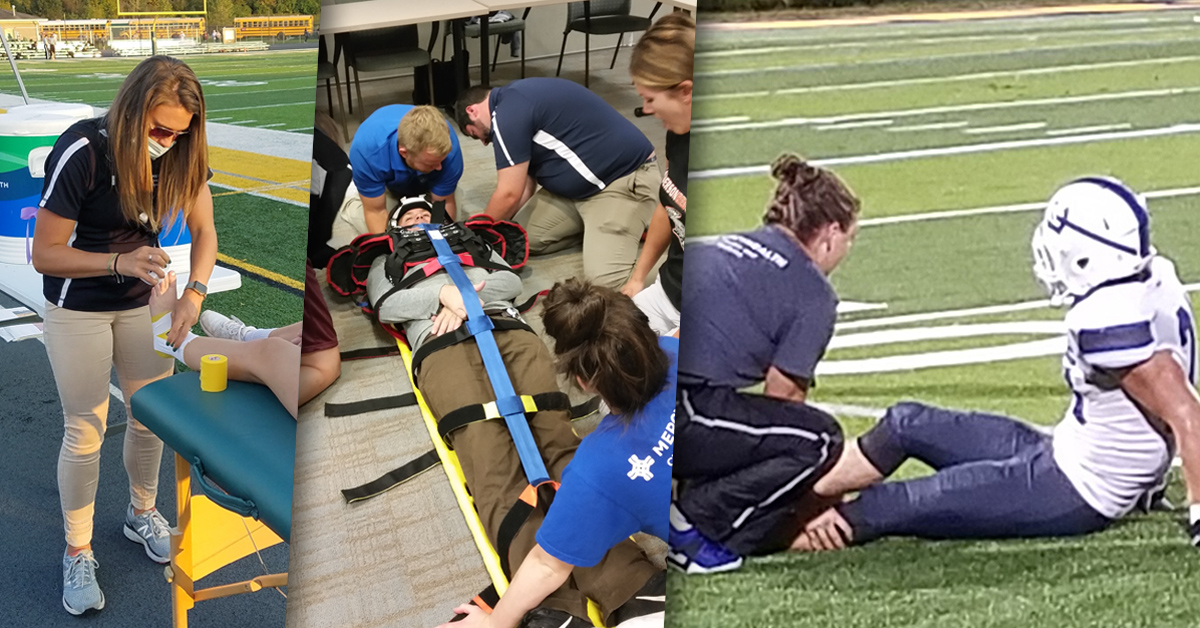Starting a new workout routine? This exercise safety guide will help you put your best foot forward. Derek Kautzmann, a rehabilitation manager with Mercy Health – Cincinnati, walks through the dos and don’ts of getting in shape.
Getting Started
Many of us want to feel and look better. Exercising is a great way to achieve those goals. However, it’s important to do it right – both to succeed and to stay healthy throughout the process.
“Whether your goal is to improve your running time or lose weight, it’s important to set realistic expectations,” says Derek.
When setting up your plan, note that weight loss is 50 percent exercise and 50 percent diet. Thus, it is just as important to eat right as it is to be active.
Variety is the other important key. Different exercises promote focus on different muscle groups and help avoid overuse of one body area. For beginners, it is also best to start exercising every other day or three times weekly, increasing intensity and consistency over time.
Injury Risks
With physical activity, there is always the risk of injury. The most common injuries seen by Derek and his staff are pain from overuse as well as stress to joints and muscles.
“I always tell patients about the need to allow for sufficient recovery time,” says Derek. “In our society, more is often seen as better. But it’s important to know your limits.”
In the event you go too far, your body will let you know. The symptoms of a workout injury include pain, localized swelling, and muscle soreness that last more than 24 hours. These signals are telling you to modify your activity to avoid hurting yourself further.
Help is Available
In the unfortunate event you do hurt yourself while shaping up, professional help is available. Physical therapy can help you recover and get you back to doing what you love.
“In the acute phase of an injury, our first goal is to do no further harm,” says Derek.
Here are some of the ways Derek and his team help their patients recover safely:
- RICE Protocol: It is important to start Rest, Ice, Compression and Elevation right away.
- Increasing Range of Motion: Once symptom relief is achieved, the next goal is to increase range of motion through exercises that focus on muscle flexibility and strength. “Through our AlterG treadmill, we can take body weight out of the equation and let patients run at a fraction of their weight. This reduces the impact of weight on joints while maintaining good biomechanics,” says Derek.
- Dry Needling: Painful muscle knots can be a result of overuse. Dry needling is a treatment option that involves the introduction of needle or filament into a trigger point. This then elicits a twitch response that causes the muscle to relax.
- Blood Flow Restriction: In the event surgery is needed following an injury, healing tissues can’t tolerate high intensity levels right away. Blood flow restriction, or BFR, involves the use of a tourniquet on an upper or lower extremity to restrict blood flow during brief sets of easier exercises. This provides the burn and strengthening in your muscle at much lower rate of intensity.
- Keeping Diet in Mind: It’s not unusual to gain weight after an injury. However, diet plays a big role in healing, especially when there is atrophy. “Make sure you take in enough protein to help you heal and get back to your best self,” says Derek.
Learn more about the Sports Medicine services offered at Mercy Health.






